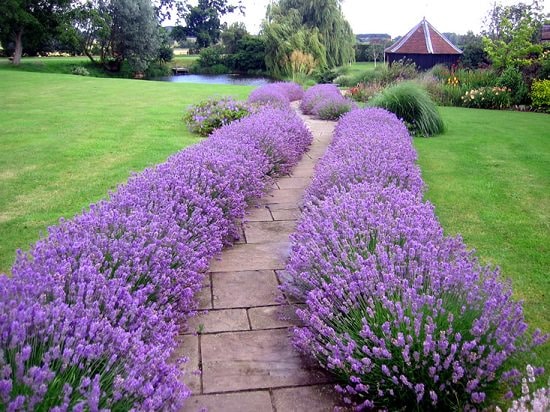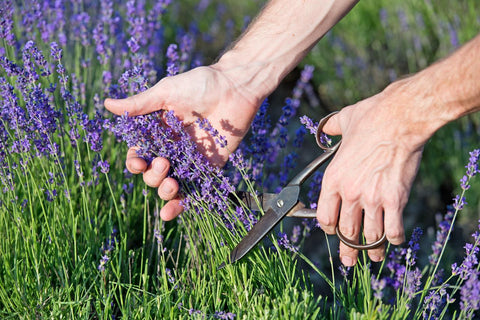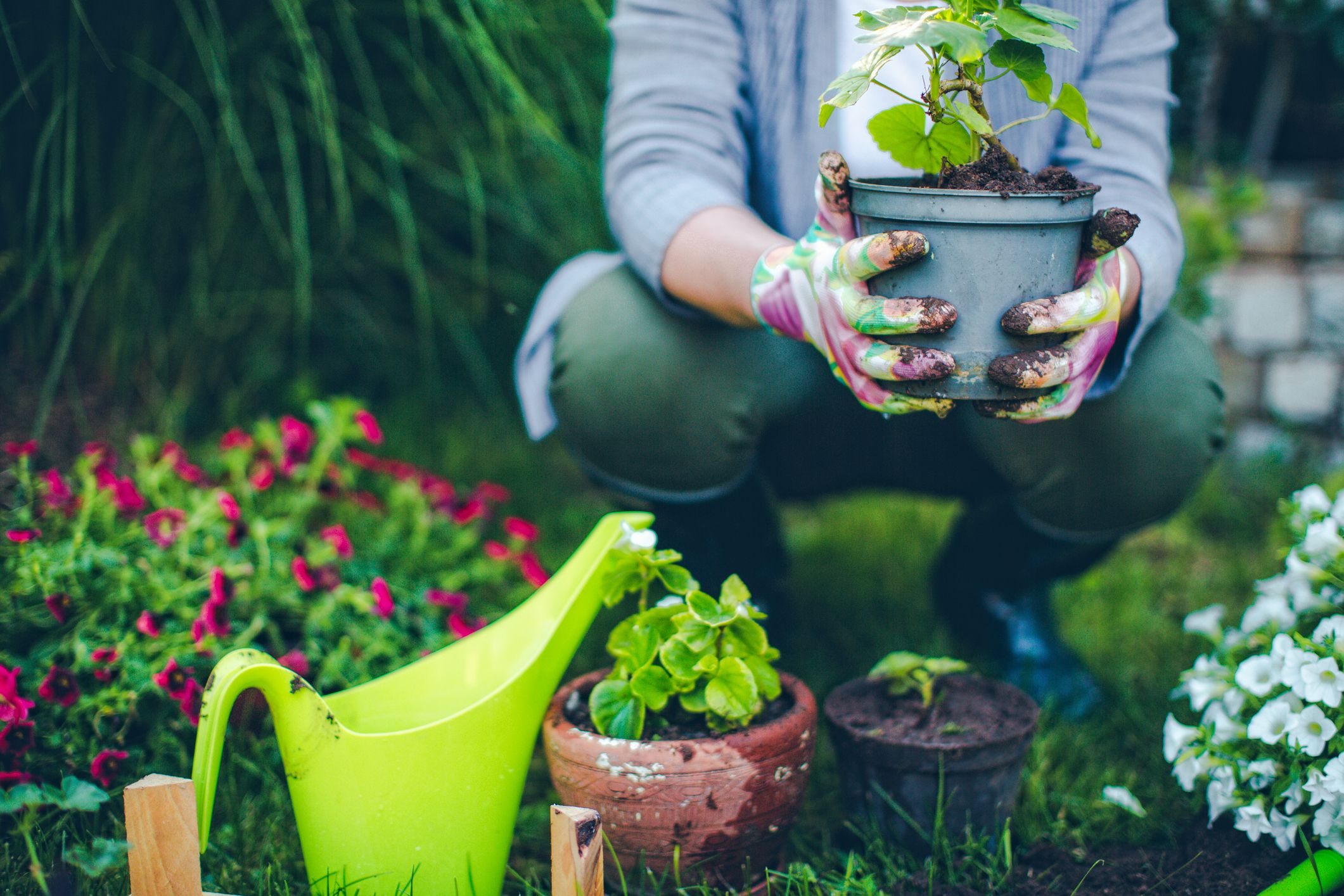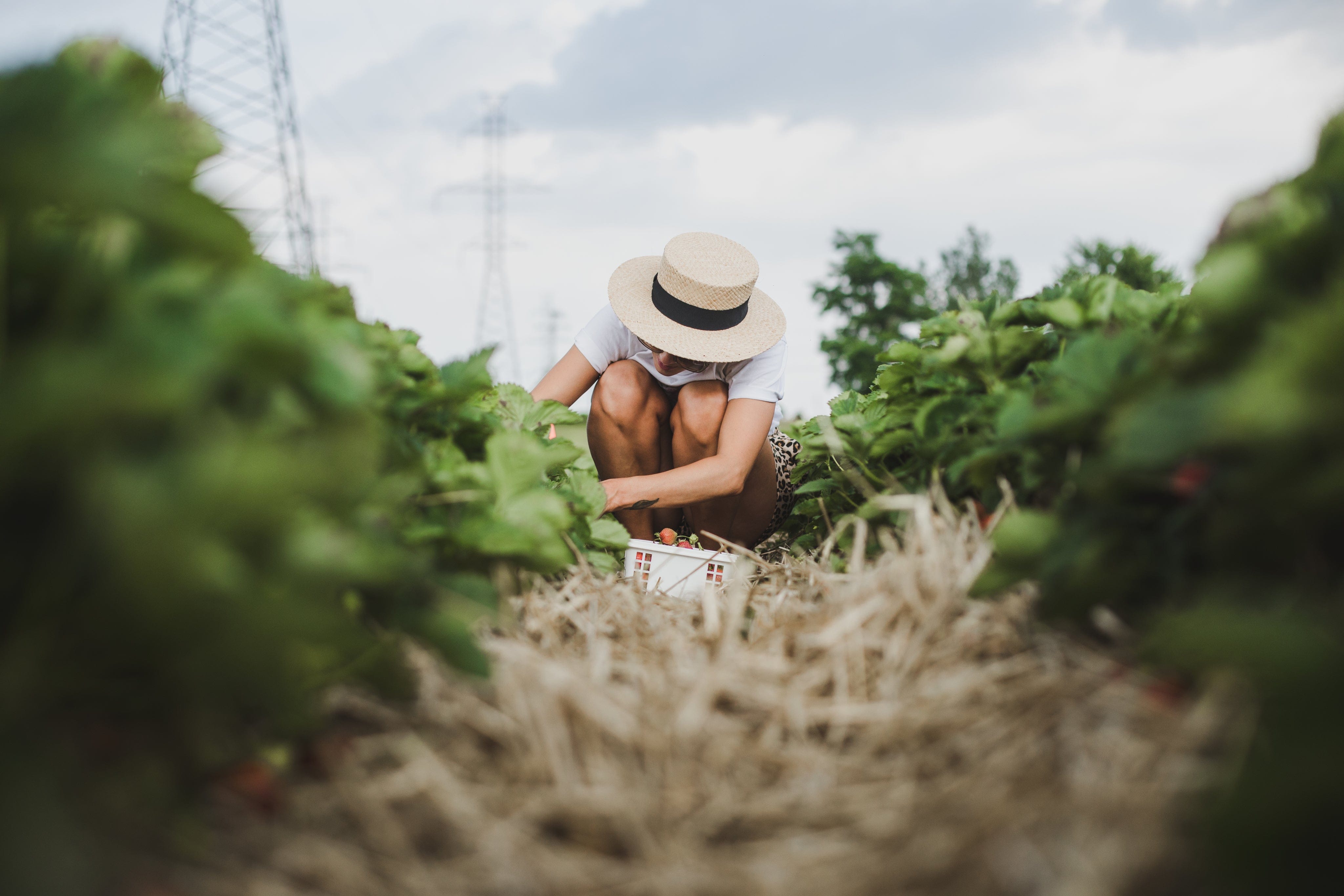
How to grow lavender: Find out everything you need to know about lavender

Learn all about Lavender.
Lavender is one of the most beautiful smelling plants to have in your garden as well as adding a pretty purple colour to any space. It may seem easy enough to grow, which it is, however to get the best outcome, it is good to know all the best techniques.

Lavender is a versatile plant as it can grow in most climates and multiplies relatively easy.
It also has a strong scent used in many products and for good reason. Lavender is commonly used in aromatherapy, the fragrance from the oils of the lavender plant is believed to help enhance calmness. It's also said to help reduce stress and anxiety.
Besides its known benefit for being a powerful scented plant, it is also an ancient medicinal plant, an effective pest repellent, a valuable companion plant, a flavour for food and a household freshener.
We will dive deeper on all the uses of lavender later on.
Lets start simple, below are the basic steps to follow for growing lavender:

Choosing the location to plant
It is best to plant in a sunny spot with well-drained soil. Avoid cold shady areas.
Soil choice
Lavender thrives better in dry soil.
Make sure your garden beds have soil that drains well, you can add compost to your garden soil.
Lavenders prefer a soil with a higher percentage of acid.
If you do not have the right soil type in your garden, try planting it in concrete pots where you can modify the soil to fit.
Use a good potting mix, which drains well. Fertilise the soil a few times during the growing season and water regularly.
For soil that drains well, mix some sand or gravel into the soil before you plant the lavender. Try avoiding mulch that holds onto moisture, rather use rock or stone in your soil.
Lavender have dense roots and therefore may require repotting or planting more regularly than many other plants.
When you have located your area to plant the lavender, dig the patch of soil and be sure to remove any weeds.
Tip: Check your soils Ph balance
Learn more about the different soil types on our "best types of soils for plants" blog.
When to plant
For the best results, it is important to try plant your lavender as soon as possible after buying it. If it is not possible to plant right away, make sure you water it.
Plant Spacing
Make sure you leave a good amount of space for your lavender to grow.
When planting, place closely packed varieties about 45cm apart. For larger varieties, place them about 90cm apart, which will allow air to circulate between the plants; this helps prevents fungal disease.
Watering
The initial planting phase is when most of the attention is required, water regularly after planting, monitor your plants, especially during warm weather conditions.
Once established, lavender is a low-maintenance plant, it is then considered drought tolerant and requires minimal watering. Aim to water the lavender at least once a week in summer. Lavender that you have planted in pots should be watered every second day.
When watering, focus on the soil and try not wetting the foliage.
Pruning
After flowering you should prune lavender start by cutting back a third of the flower. If your plant is flowering progressively, you can lightly trim it in order for it to look neat.
Pruning promotes new healthy growth so do not be afraid of it.

There is a lot to learn about how and where to grow lavender and it doesn’t end there.
There is so much to know including the different types that exist and how to use it. Now that we have covered the basics, let’s dig deeper.
Types of Lavender to grow:
English lavender
Scientific Name: Lavandula angustifolia
Height: 2 to 3 feet
Flower colours: Lavender, deep blue-purple, light pink, white
When you imagine lavender, this is most likely the type you’re picturing. English lavender is the most commonly grown in gardens.
It offers the most radiant purple/blue flowers and unique almost grey coloured leaves, sometimes the flowers can become a white/pink colour as well.
It is a tough plant that can survive in the colder conditions of winter and flowers consecutively, just make sure they planted in well drained soil.
Varieties include, Hidcote, Munstead and Imperial Gem.
French lavender
Scientific Name: Lavandula stoecha
Height: 36 inches and larger
Flower colours: Light purple
French Lavender, also know as Spanish or Butterfly lavender, is the less popular chosen one as it is not as versatile as English Lavender and offers less of a strong scent. These thrive best in full sun or work well grown in a greenhouse or in pots where they can be moved from the garden during winter.
The look and shape of these also differ from the English lavender as they have ears sprouting from each flower head.
Hybrid 'lavendins'
Height: 2 to 2½ feet
Flower colors: Dark violet, white
The hybrid are a mix of Lavandula angustifolia and Lavandula latifolia, making them hardy and tolerant. They can handle cold and wet conditions better than most. They offer more flowers long term and can grow bigger than English lavenders.
Varieties include, Edelweiss and Grosso.
Different ways to use lavender:

Healing
As mentioned earlier lavender has a calming effect which can help with sleep, headaches, anxiety and so much more. For these reasons, take advantage of the benefits of lavender whether it be digesting a lavender infused tea or absorbing it while soaking in a lavender filled bath.
Not only can these flowers heal you emotionally but physically too. Lavender is also known to be antibacterial and can be used in creams and oils to treat burns, stings, wounds, acne and more.
Natural Insect repellent
Use lavender as a natural pest repellent, it is said to deter mosquitoes, flies, fleas, and other pests while attracting butterflies and bees. It makes for a good companion plant as it can protect the surrounding plants from pests.
It even goes as far as deterring cats and rats so you can prevent your garden from becoming the new play pen for Tom and Jerry.
Read more about companion planting.
Use lavender for its scent
If your favourite scent happens to be lavender or you just desire pretty and powerful fragrances in your home and garden, there are so many ways to capture this with lavender.
Plant lavender along the walkways, driveways or paved garden paths where you can not only enjoy the scent while walking along but have the fragrance enhanced by the heat as it reflects off the pavement.
Design beautiful hedges near your kitchen to allow for the smells to enter into your home.
Dried lavender can be used in bunches, bags and potpourri as an air freshener
Make your own cleaning product
The flowers can be combined with vinegar and water as well as a few drops of essential oil and used to clean those smelly spots and spaces gifted to us by our pets.
Culinary

Lavender offers a strong flavour which can be used in enhances a variety of sweet and savoury food. Whether dried or fresh, both the leaves and the bud can be used in food. Keep in mind, the scent is strong so be careful not to add too much to your dish as it can be overpowering.
Garden design offers wonderful ideas on how to use lavender as a culinary creation.
- Cover a bunch of dried lavender buds in a jar of sugar which will give the sugar a unique aroma, use this sugar for baking.
- Combined the fresh buds into a cake batter or sweet pastry dough before baking.
- Add flower buds to preserves or stewed fruit to give off a distinct spicy flavour.
- Sprinkle fresh lavender on a salad as a garnish.
- Infuse teas or other beverages with fresh lavender.
- Use chopped buds and leaves to flavour and tenderise your meat. It works well with a roast lamb or chicken.
- Make an aromatic dried herb mixture by combining dried lavender with thyme and rosemary.
All you need to know about growing lavender:
Best suited gardens
One of the best things about lavender is, it works well in most gardens.
Whatever your garden style there’s room for lavender. Perfect for a sensory garden to add a wonderful scent as well as an easy on the eye colour arrangement to your garden.
It fits perfectly in a classic garden setting or can be used in a more modern style look as well. Lavender can be used in a variety of styles and designs such as full and neat hedges, raised garden beds, along walkways and entrances and is even perfectly fitted for pots.
Lavender loves growing in pots, just make sure you do it right. Plant in a loamy compost with well drained, grit mixed soil and plenty of drainage holes. A good ratio is 25% grit/75% compost.
Once planted, water regularly at first and then reduce the amount after time.
Low-maintenance and long-lasting.
Lavender is a hardy flower, which can survive in most conditions as long as it is monitored properly. The flowers spread and grow for long periods with little deadheading required.
The best part is that lavender can thrive in so many design styles, including flower borders, raised beds and gravel gardens.
It works well planted amongst your herbs as it can help keep the pests away, while adding a sweet aroma to your herbs.
If you take care of your lavender, it will most likely grow back every year. Remember to provide the plant with what it desires which is a sunny spot, dry soil, and a light prune from time to time.
Some types of French and tender lavenders may not survive the winter outside.
Lavender bushes typically last between seven and ten years before needing replacing.
Where and when to grow lavender
As lavender is a Mediterranean plant, it does prefer warmer conditions. It is best to plant it in the warmer seasons.
The varieties of lavender thrive best in slightly different conditions depending on how tolerant they are however all lavender likes the sun.
Perfect the pruning

If you want to keep your flowers looking neat and fresh, make sure to prune them into shape once they have flowered.
If the plant becomes woody and dry, cut it back by about half its height in the spring to promote fresh new growth and full-bodied flowers. Make sure when you are cutting back, you cut the flower stalks and not the woody stem.
Plants that aren’t pruned can lose their flowers, so make sure to cut off those dying flowers in summer to encourage repeat blooming throughout the season.
Drying Lavender

Remember earlier we mentioned how dried lavender can be a component for a variety of things including food, scents and medicinal purposes. In order to obtain these uses, it is best to know how to dry it out but don’t worry its super easy. Here it is explained perfectly by Gardening etc.
- Snip the flowers. Follow the stem down from the flower bud until you reach a junction where two side leaves or new buds have begun to form.
- Snip the stem just there and the plant will continue to produce more fresh flowers. For longer stems, simply snip deeper into the plant.
- The simplest way to dry fresh lavender is to hang it up in small bunches.
- Secure each bunch loosely with twine, then hang them upside down in a warm, dry spot where the air can circulate around them.
- Alternatively dry your bunches of lavender in vases, making sure there is plenty of room for air to circulate around the stems to prevent them going mouldy.
If reading about strong smells and eye catching colours has triggered those senses, read more about creating a sensory garden.
Now that you know how and why lavender is a garden must, take the lavender leap and buy all you need, right here.

Resources:




Leave a comment
This site is protected by hCaptcha and the hCaptcha Privacy Policy and Terms of Service apply.